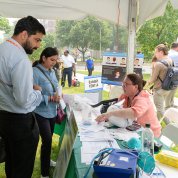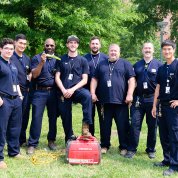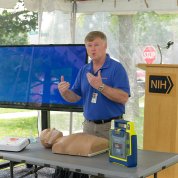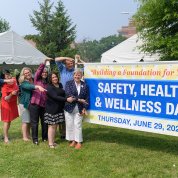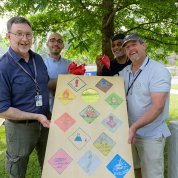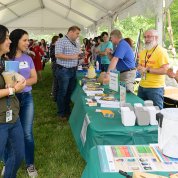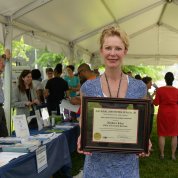Wildfire Haze Affects Wellness Day
12th Annual Event Returns on Site for First Time Since 2019
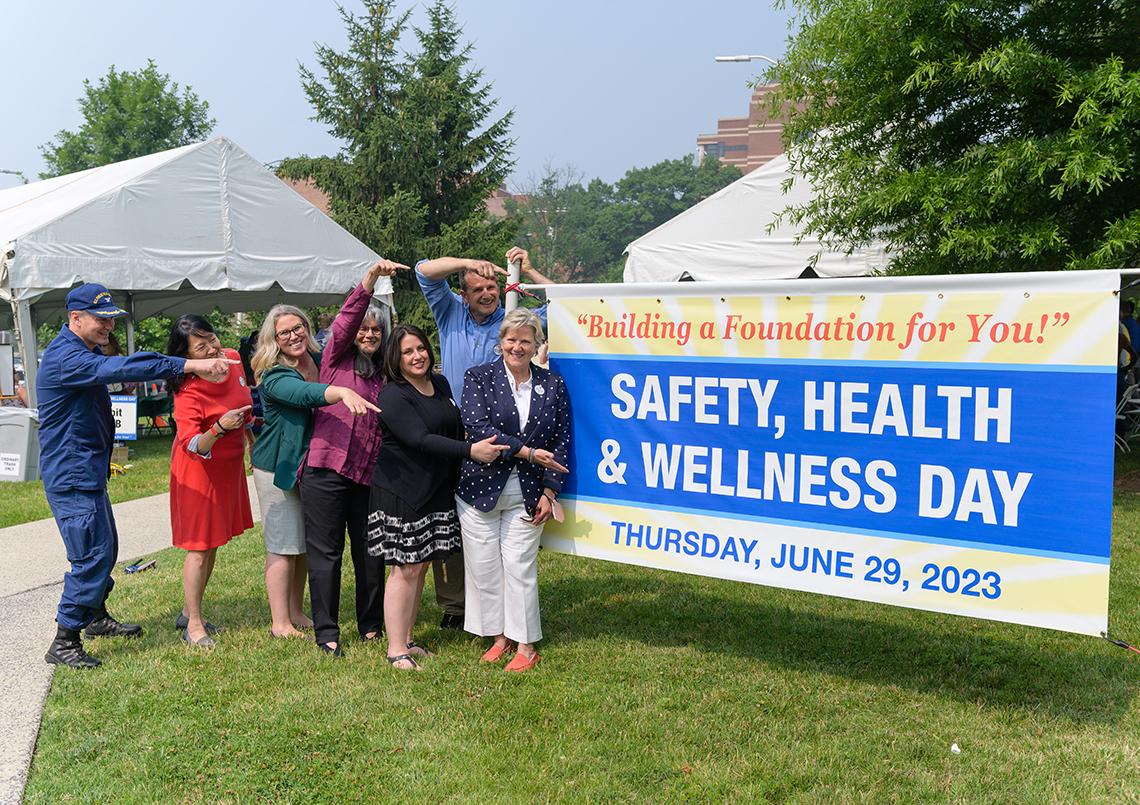
Photo: Marleen Van Den Neste
The 12th annual Safety, Health and Wellness Day transformed the south lawn of the Clinical Center on June 29. The widely anticipated event—held in person for the first time since 2019—provided staff an opportunity to rejuvenate their commitment to overall well-being. Sponsors included NIH’s Office of Research Services (ORS), Office of Research Facilities, occupational safety and health committee and the Laboratory Sustainability Group along with 2023 co-sponsor the National Institute of Mental Health (NIMH),
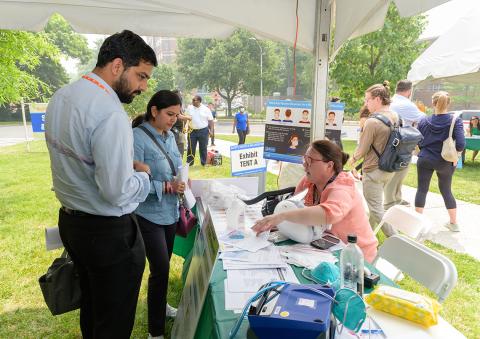
Photo: Marleen Van Den Neste
An unforeseen decline in air quality—due to smog from wildfires in Canada—required a mid-day relocation indoors and other adjustments to ensure the safety of attendees.
As enthusiastic staff gathered to participate in a wide range of informative demonstrations and activities, the event kicked off as scheduled, offering a variety of health and wellness showcases such as chemical safety, ergonomics, heart-saving CPR training, integrated pest management, mental health awareness, nutrition, roadway safety and total worker health. Two tents had been set up to accommodate rows of booths, where institutes and other organizations shared insights on safety, health and wellness.
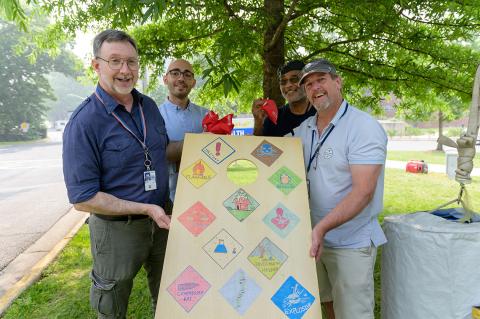
Photo: Marleen Van Den Neste
One standout attraction was the “Chemical Cornhole” game presented by the ORS Division of Occupational Health and Safety (DOHS). After successfully tossing a bean bag onto the board, participants were asked to randomly select a chemical from a bucket and place it in the correct storage container. The activity allowed employees to enhance their knowledge of chemical storage safety protocols in a fun way.
As attendees browsed the different booths, they were able to pick up an assortment of handouts. NIMH gave away pamphlets on different mental illnesses, such as anxiety disorder and panic disorder. If the booths and handouts didn’t provide enough wellness and safety tips, attendees had the opportunity to listen to seminars and participate in demonstrations, ranging from dance and yoga classes to CPR training.
However, as the day progressed, the deteriorating air quality became more apparent. Concern for the well-being of attendees prompted organizers to prioritize safety and shift the event to a virtual format. By noon, the booths and outdoor activities were closed, and the remainder of the event proceeded online, allowing staff to participate from the comfort of their workstations.

